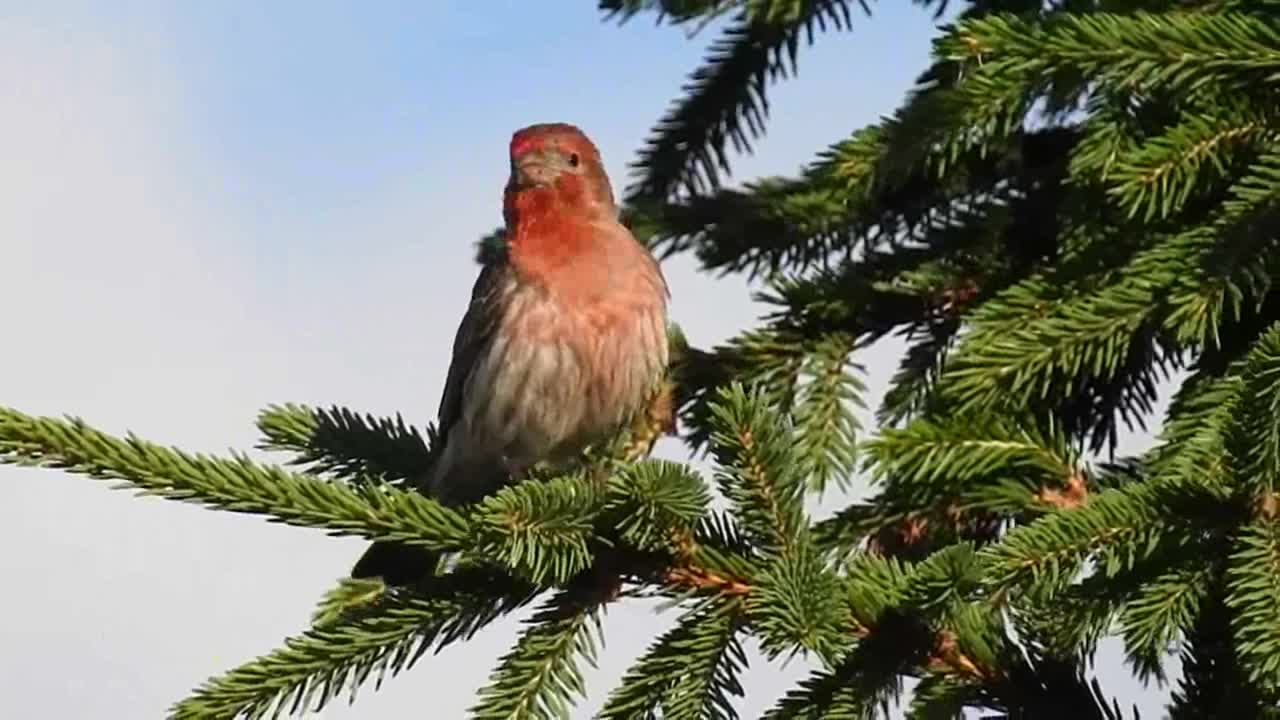Premium Only Content

most beautiful bird songs in the world
1º The Pheucticus ludovicianus is a species of bird of the Cardinalidae family. They nest in North America and migrate in winter to Mexico, Central America, the Caribbean and South America.
2º The bobolink (Dolichonyx oryzivorus) is a small blackbird from the New World and the only member of the genus Dolichonyx. An old name for this species is "rice bird" for its tendency to feed on cultivated grains. Adults are 16 to 18 cm (6.3 to 7.1 in.) in length, with short finch-like beaks and weigh about 28 g. Adult males are mostly black with creamy buttocks and white scapulars, lower back and buttocks. Adult females are mostly light brown with black stripes on the back and flanks and dark stripes on the head; their wings and tails are darker. Bobolink breeds in summer in North America and southern Canada, often wintering in South America. Considered a pest by some farmers, numbers of these birds are declining and are an endangered species across Canada.
3º The house finch (Mexicanus Haemorhous) is a bird in the Finch family Fringillidae. It is native to western North America and was introduced into the eastern half of the continent and Hawaii. This species and the other "American goldfinches" are placed in the genus Haemorhous.
4th The thrush (Hylocichla mustelina) is a North American passerine. It is closely related to other robins, such as the American thrush, and is widely distributed throughout North America, wintering in Central America and southern Mexico. The thrush is the official bird of the District of Columbia.
The wood thrush is a medium sized thrush, with brown upper parts and mottled brown and white feathers. The male and female are similar in appearance. The Man's Song is often cited as the most beautiful in North America.
The thrush is an omnivore and feeds preferentially on invertebrates and soil larvae, but it also eats fruit. In summer, it feeds on insects continuously to meet daily metabolic needs. It is solitary, but sometimes it forms mixed-species flocks. The thrush defends a territory that varies in size from 800 to 28,000 m 2 (960 to 33,490 m²). The thrush is monogamous and its breeding season starts in spring; about 50% of all mated pairs are capable of raising two litters, ranging in size from two to four chicks.
5th The common loon or great northern diver (Gavia immer) is a large member of the loon, or diver, family of birds. Breeding adults have plumage that includes a broad black head and neck with a greenish, purplish or bluish sheen, black or gray-black upper parts, and pure white underparts, except some black in the infra-inferior hoods and ventilation. Non-breeding adults are brownish with a dark neck and head marked with dark grayish brown. Its upper parts are dark brownish gray with an obscure pattern of squares on the shoulders, and the lower parts, lower part of the face, chin and throat are whitish. The sexes are similar, although males are significantly heavier than females. During the breeding season, loons live in lakes and other waterways in Canada; the northern United States (including Alaska); and parts of southern Greenland and Iceland. Small numbers reproduce on Svalbard and sporadically elsewhere in Arctic Eurasia. Loons winter on both coasts of the United States, as far south as Mexico and on the Atlantic coast of Europe.
-
 LIVE
LIVE
Graham Allen
1 hour agoCanada WILL LOSE!! Trudeau Enters Trade War With The US! + Zelensky Is Missing 102 BILLION?!
5,569 watching -
 LIVE
LIVE
BonginoReport
3 hours agoTrump Obliterates USAID—the CIA's Piggy Bank (Ep.131) - 02/03/2025
10,847 watching -
 LIVE
LIVE
Wendy Bell Radio
4 hours agoBeware The Wrath Of A Patient Man
9,093 watching -
 1:23:17
1:23:17
Game On!
10 hours ago $0.03 earnedHappy Super Bowl Week! Our Top 10 Super Bowl Props to Bet!
3231 -
 LIVE
LIVE
Jeff Ahern
50 minutes agoMonday Madness with Jeff Ahern (6am pacific)
362 watching -
 LIVE
LIVE
SoniCentric
2 days agoSoothing Autumn River Coffee Shop with Relaxing Jazz
184 watching -
 27:00
27:00
Squaring The Circle, A Randall Carlson Podcast
6 hours agoSPECIAL EPISODE: #037 Randall Carlson Explains The Vital Role of Sacred Geometry in the Modern Age.
6931 -
 15:31
15:31
DEADBUGsays
2 hours agoThe Sagamihara Massacre (Japans worst modern day mass killing)
821 -
 1:24:06
1:24:06
TheDozenPodcast
20 hours agoIslamist Gangsters, Grooming Gangs, Labour Elites: Raja Miah
5.8K4 -
 19:39
19:39
Fit'n Fire
22 hours ago $2.13 earnedRiley Defense RAK47 "Krink" 1,696 Rounds Later
23.2K5